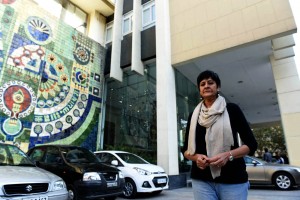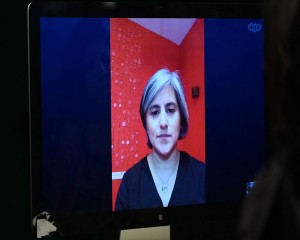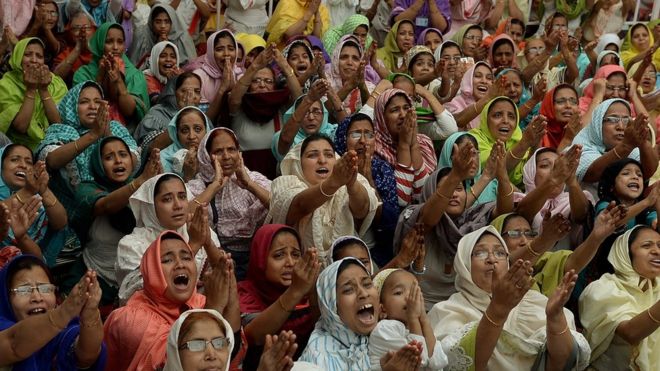Imagine being taken to a room in a dark decrepit building. Imagine being pinned down on the floor. Imagine your underwear being taken off. Imagine seeing a knife being heated on the gas stove. Imagine the same hot knife slicing your clitoris. Imagine young girls shrieking in pain.
The cruel practice of female genital cutting or female genital mutilation (FGM) is not happening only in far away Africa. It’s not just being practised in tribal societies. Young girls aged six and seven are regularly being cut right here, in India. Mumbai abounds with untrained midwives who continue to scar young girls from the Bohra community, a Shia sub sect.
For long, FGM or khatna as the Bohras call it remained a well-kept secret, a taboo, a subject never to be discussed. But now a few women – victims at the hands of the Bohra tradition – are choosing to speak out and create awareness. Masooma Ranalvi, a Delhi-based publisher – who has put her name to an online petition against the practice along with 17 other women – has decided it’s time to come out in the open. The pain has become a trigger and the passion to save other girls from being cut have made her and the others fearless.
against the practice along with 17 other women – has decided it’s time to come out in the open. The pain has become a trigger and the passion to save other girls from being cut have made her and the others fearless.

“I experienced a sharp, shooting pain and she put some black powder there…”


Aarefa, like other women, has had long conversations with her mother who now supports her in her fight against FGM. “When I got it done for my daughter, I did it because it was a custom to be followed,’’ says Aarefa’s mother Sophie Johari. She read an article by a Bohra woman some years later and made Aarefa read it too. “It struck me that I should have thought about it more. I’m a science student. I really should have thought about it,’’ says Sophie who now lends support to her daughter’s campaign on Facebook.
“I did it for my daughter because i was told it is a custom. There was no ill intention.”
Few will be able to answer a question so relevant because there are no medical norms to determine the cut. Untrained midwives use blades and knives that recently left a seven-year-old bleeding for six days. “She had to use a sanitary pad,’’ an aunt told us on condition of anonymity.
The aunt, like Zehra, fails to understand the dichotomy between the regressive practice in an otherwise progressive community. Bohra girls are educated and have travelled the world. Shaheeda Kirtane, a researcher in public health and policy, was protected by her mother, Dilshad Tavawalla, afamily and child protection lawyer based in Canada.
She was lucky to escape being put under the knife and has joined the fight against FGM to try and stop her community from betraying its daughters. “I’m not able to explain to myself. It’s so ingrained in culture. They unquestioningly do it to be part of the community. If you openly declare you won’t do it, the backlash is considerable and many just won’t do business with you,’’ she says.


“There is no openness about it. We don’t know what was done. Was it a nick, a big cut, what was it?”
One reason why khatna continues is because the Syneda, or the Bohra high priest, refuses to engage on the issue either with the women or the media. The United Nations has declared female genital mutilation a human rights violation but there is no ban in India. Young girls are still being taken to midwives and to doctors in Bohra-run hospitals. An anonymous Bohra woman petitioned the Syedna in 2011 but drew a blank but the current one in which Masooma, Aarefa and Insia have identified themselves is gathering steam with over 45,000 signatures.
Slowly, the issue is becoming less taboo. In Mumbai, HT approached Nushrat Bharucha, a prominent Bohra face who has hit the Bollywood screen with Pyar ka Punchnama. She initially agreed only to a tape-recorded interview but soon sent a message saying she wanted to be a part of the campaign to stop FGM.
Her parents ensured she wasn’t mutilated and she says, “If I have a daughter, no way is she going through this.” Her mother Tasneem says she was broken after she realised how her mother had plotted her khatna and her father Tanveer, who distanced himself from the clergy by not paying the household tax the clergy fixes, had to pay a huge emotional price. He wasn’t allowed to bury his father till he paid up. The family is united now and willing to withstand any backlash that comes their way in the fight against FGM.
The fight is picking up slowly. A conviction in Australia in November, where a nurse and a mother are set to go to jail has led to chatter within the community and a decree from the Sydney Jamaat advising all Bohras against being in contempt of the country’s law. Insia and Mariya are part of Sahiyo
in November, where a nurse and a mother are set to go to jail has led to chatter within the community and a decree from the Sydney Jamaat advising all Bohras against being in contempt of the country’s law. Insia and Mariya are part of Sahiyo , an NGO speaking to community members through an ‘each one, reach one’ campaign that is also being promoted on the Speak Out on FGM Facebook page. Masooma and Aarefa plan to finally ask for a ban when they take their petition to the ministries of women and child development, law and health.
, an NGO speaking to community members through an ‘each one, reach one’ campaign that is also being promoted on the Speak Out on FGM Facebook page. Masooma and Aarefa plan to finally ask for a ban when they take their petition to the ministries of women and child development, law and health.

Sahiyo members are analysing the results of an online survey they conducted. Preliminary findings show that 80% of 400 respondents have been cut. Non-Bohra women are joining the fight too. Priya Goswami, director of a documentary titled ‘A pinch of skin’ is one of them. “When I saw the film on the big screen, I realised I couldn’t move away from it. It’s great that we have formed a coalition of sorts to try and end khatna.”
Family and child protection lawyer Tavawalla views khatna as a gross violation because children are not able to protect themselves. “Laws play a very essential role in bringing about social change. Gender reforms are slow and hard-fought, even more so when they involve ancient, archaic and cultural practices of a secretive and closed community like the Dawoodi Bohras,’’ she says.
Women from the community agree. The secrecy comes wrapped in deceit and betrayal. And a grave form of abuse on young minds and bodies.

